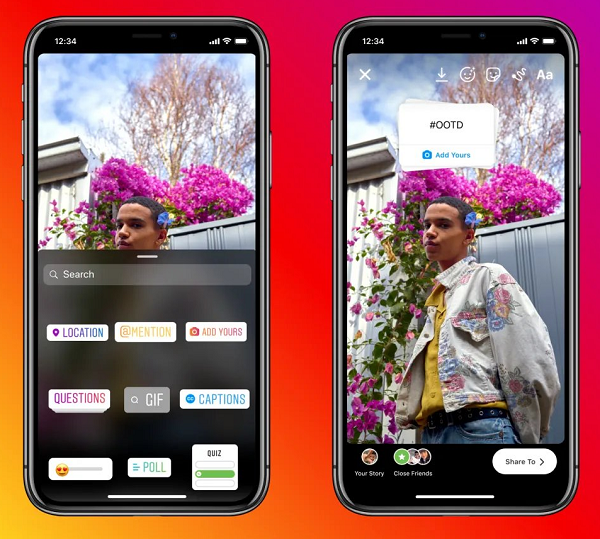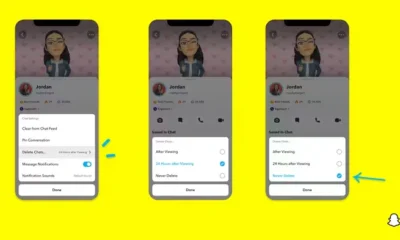WhatsApp and other social media platforms restricted in Zambia amidst ongoing elections


Several users from Zambia have taken to Twitter informing the general public that WhatsApp has been restricted in the country amidst ongoing general elections today.
The president and parliamentary elections culminate in a face-off between current President Edgar Lungu and opposition Hakainde Hichilema.
Internet monitoring organization Netblocks further corroborated these reports, adding that multiple internet providers in Zambia had restricted access to the American social messaging platform. Some of these networks include Zambian government-owned Zamtel, Airtel Zambia, Liquid Telecom and MTN.
Just this week, reports circulated that the Zambian government had threatened to shut down the internet if Zambians “failed to use the cyberspace during this year’s election correctly.” The reports say the government intended to go through with its plans from Thursday, the polling day, till Sunday, when vote counts are expected to have ended.
However, the Zambian government, via its Information and Broadcasting Services Permanent Secretary, Amos Malupenga, came out to deny the reports, calling them “malicious.” Nevertheless, he mentioned that the government would not tolerate abuse of the internet and if any mischief occurred, there would be no hesitation to take appropriate measures.
“The government, therefore, expects citizens to use the internet responsibly. But if some people choose to abuse the internet to mislead and misinform, the government will not hesitate to invoke relevant legal provisions to forestall any breakdown of law and order as the country passes through the election period,” Malupenga said.
Zambia isn’t the first African country to witness this during an election as social media restrictions and internet shutdowns are now a recurring theme for most African states.
Countries like Cameroon, Congo, Uganda, Tanzania, Guinea, Togo, Benin, Mali and Mauritania have faced social media restrictions and internet shutdowns during elections. A handful of others like Chad, Nigeria and Ethiopia, on the other hand, have experienced similar restrictions for unrelated events.
Most governments argue that they carry out social media restrictions and internet shutdowns to maintain security during elections; however, it’s glaring to see the process as a means to curb the spread of vital information among voters and the media within and outside the country.
Today’s event shows that despite denying reports about an imminent internet shutdown, the Zambian government is heading in that direction by first cutting off WhatsApp. While writing on the WhatsApp restriction, Netblocks also reported that the Zambian government has proceeded to restrict other social media platforms, including Facebook, Instagram, Messenger and Twitter.
Still, internet users in Zambia are now using VPN services to bypass the restrictions on WhatsApp and these other social media platforms. Yet, it remains to be seen if the government will enforce a full internet shutdown.
Instagram adds “Text to Speech” and “Voice Effects” feature to assist content creators to …

Instagram has brought two new features “Text to Speech” and “Voice Effects” to its platform. These features are already present on Tiktok. According to Instagram, users who create reels will be able to use these new features to make the reels better.
After Tiktok was banned in India, Instagram added a feature called Reels on its platform to attract content creators, although even after this, Reels has not been able to garner as much popularity as Tiktok, keeping this in mind Instagram is adding features like Tiktok to the reels so that more and more content creators will get attracted to the reels.
Text to speech feature will allow giving artificial voice to text. On the other hand, if we talk about Voice effects feature then with the help of the Voice Effects tool, you will be able to modify the audio and voice-over. Using these features will also be very easy, you will get a total of five-voice effect options, with the help of which you can convert ordinary audio into artificial voice including Announcer, Helium, Giant, Robot, and Singer. After recording a reel, tapping on a music note in the audio mixer will take you to the Effects menu, where you can add different sounds to your reel. Users can leverage these features on iOS and Android devices. Further in this article we will know how we can use these features to make a perfect reel.
Step 1: First of all go to the Instagram app and open the Reels section.
Step 2. After that open Instagram camera tocreate a reel or upload it from the mobile gallery.
Step 3: Now to write new text, you have to go to the Text tool.
Step 4: After typing the text, tap on Text to Speech at the bottom.
Step 5: In this option, you will see different options of voice, out of which you can select the voice of your choice.
Instagram Launches ‘Add Yours’ Sticker to Facilitate More Engagement in Stories

Oh look, Instagram is once again following the lead of TikTok with a new feature, what an astounding surprise this is.
Today, Instagram has launched a new ‘Add Yours’ sticker for Stories, which enables users to prompt others to respond to their Stories content, in order to create more engaging reply threads to Stories posts.

As you can see here, now, users can add the new ‘Add Yours’ sticker to their Stories frame, with the example using an ‘outfit of the day’ prompt, calling for followers to respond with their own #OOTD image.

When users respond, they’re added to the profile bubble listing on the sticker, which, when tapped, enables users to go through all the other responses to the thread, building a response chain within Stories that can help prompt more engagement.
Which sounds a lot like TikTok’s Duet feature, which often sees many users adding to a Duet chain, creating long, interactive streams of content based on the original theme.
The engaging, community-based creativity of TikTok is a key element in its appeal, so it’s no surprise to see Instagram, once again, taking inspiration from its now key rival. But at the same time, it’s a bit much – Facebook’s repetition sometimes feels like it’s going too far to try and latch onto these usage trends.
I mean, it makes sense – TikTok is seeing huge engagement, and Instagram wants to hook into that wherever it can, in order to keep users from migrating away from its app, and if it can utilize similar functions, it probably should at least test and see what results it gets. But it’s a fairly obvious replication here.
Maybe it works, so who really cares? But still, Instagram, and Facebook (or Meta) more broadly, is not very good at coming up with new, original ideas in this respect.
Which will be a key impediment to its new push to win back younger audiences, with Facebook CEO Mark Zuckerberg recently noting that it will make serving young adults a priority in its products, rather than optimizing for older users. Facebook knows that it needs to maintain engagement with younger user groups to maximize take-up of its advanced, metaverse-aligned offerings, and the data shows that it’s losing on this front, with Facebook usage among people under the age of 24 declining over the past decade.

A key issue in this sense is that Facebook simply lacks cultural nous, and understanding what younger audiences respond to – which is why Snapchat is regularly able to spark and lead new trends, and now TikTok has become the main vehicle for the same. Instagram did once have that cultural presence, that direct line with creative online communities, but over time – since Facebook took over – it’s also lost touch. And while the graph above doesn’t relate to Instagram usage, you can bet that the same trends are likely happening on IG as well, hence the renewed focus from Zuck on younger groups.
Which is relevant here because of the replication. Yes, Facebook has seen success in stealing features from Snapchat and TikTok, to varying degree, with Instagram Stories being the key winner, while Reels has also been a hit for Instagram, even if usage still trails well behind TikTok. But it’s not helping Facebook win the broader cultural shift, Facebook is no longer seen as the innovator, it’s lost its cool factor in this respect, because of the constant replication.
Or maybe not because of this, but it’s an element in the wider shift – Facebook’s become very good at bringing these features to less web-savvy users who aren’t active in these other, newer apps.
But for those that are always across the next key trends – like, say, younger audiences – Facebook’s replication just seems stale and second rate. It’s the older people catching up on things behind everyone else, then telling you about this cool new feature that you’d already been using well before they came across it.
That’s the inherent failure in Facebook’s replication approach, that it constantly leaves it a step behind, rather than being a leader – and if it’s not a leader, it loses that cool cred, and younger audience engagement as a result.
So it might work, in a broader sense, in terms of deriving in-app engagement on the back of these usage trends originating from other apps. But really, it’s like the corporatization of these shifts, and unless Facebook can change things up, and start leading the way on some of these key trends, I don’t see how it’s going to win back the youth.
Instagram had been testing the ‘Add Yours’ sticker with some users over the past month, but it’s now being rolled out to all users globally, on iOS and Android.
Instagram For E-Commerce

Alright, let’s get this out the way. Millennials and Gen-Z have ruined everything. Now that that’s out of the way, we can get on to how they’ve changed the way e-commerce brands handle sales, marketing, customer engagement, and advertising.
We’ve seen and read enough articles online about how Millennials have ruined this industry, or that industry.
In all fairness, the way they’ve changed the e-commerce industry has had a quite positive impact for businesses and vice versa. Millennials and Gen-Z make up a majority of Instagram users, growing in their careers to have better purchasing power. In fact, a study (.pdf) has revealed that 81 percent of millennials are shopping online on a weekly basis.
What does that mean?
Essentially, with such a large number of shoppers online, it changes the way you’d handle e-commerce and retail. The pandemic and the waves of lockdowns have exploded the use and growth of online shopping.
If the pandemic has taught us anything, it’s how digital spaces have added value to businesses, helped companies stay afloat during these times, and how physical spaces aren’t always a 100 percent necessary to run your business. But rejoice! Because this does have quite a few positive implications for businesses.
All you need to look at is the recent trends in advertising and marketing on Instagram. The endless scrolling that Instagram users go through pretty much everyday exposes users to hundreds of ads, and the lines between posts and ads become quite blurred.
Sure, Amazon does have a firm grip in the e-commerce space, but while Amazon functions on a planned shopping model (where users pretty much know what exactly they’re looking for, and search for those products), Instagram relies more on impulse buying.
So while Amazon is established in the market, it lacks Instagram’s appeal of seamless advertising with the ease of online purchase.
Why Go Digital?
The pros of online shopping really do outweigh the cons. Yes, quite a few shoppers do love the experience of physically going to stores, actually seeing and trying out the products they’re buying, and speaking to a sales person to get more details of the product they’re buying.
However, with the rate at which e-commerce is scaling, businesses (and these platforms) are finding better ways of offering better online shopping experiences to customers. The most obvious pro is accessibility. Customers are no longer limited to shopping in stores specific to their city.
You no longer have to go through the disappointment of finding some great products and realising there are no stores in your city. In fact, it’s also become the case that you might find some great international brands as well, really love their products, and realise, “Yes! I can get this shipped to my place!”
According to ToughNickel, the biggest advantage is convenience. But besides the convenience, you have the bonus of not facing any undue sales pressure, wider variety, as well as easy comparison of prices to find the best deal for yourself.
While Instagram may not solve the problem of physical spaces and physically trying out products, it does solve the problem of making your business accessible online, and giving them another channel to shop.
Plus, with Instagram’s APIs now open, giving you the ability to build out chatbots and integrate with other apps, it solves the problem of communication, with chatbots being able to answer FAQs, give customers purchase options, instant information about their orders, and provide a seamless transition between chatbots and human interaction.
As mentioned earlier, the number of users on Instagram along with the impulse to buy stuff they come across randomly while scrolling makes Instagram one of the best spaces to be present in, especially considering the shift in shopping habits by the younger generation, regardless of whether you’re a new business or not.
Author:
Anish, Developer, Tellephant
-

 PPC5 days ago
PPC5 days ago19 Best SEO Tools in 2024 (For Every Use Case)
-
SEARCHENGINES7 days ago
Daily Search Forum Recap: April 17, 2024
-
SEARCHENGINES6 days ago
Daily Search Forum Recap: April 18, 2024
-
SEARCHENGINES5 days ago
Daily Search Forum Recap: April 19, 2024
-

 MARKETING6 days ago
MARKETING6 days agoEcommerce evolution: Blurring the lines between B2B and B2C
-

 SEO6 days ago
SEO6 days ago2024 WordPress Vulnerability Report Shows Errors Sites Keep Making
-

 WORDPRESS5 days ago
WORDPRESS5 days agoHow to Make $5000 of Passive Income Every Month in WordPress
-

 WORDPRESS6 days ago
WORDPRESS6 days ago10 Amazing WordPress Design Resouces – WordPress.com News














